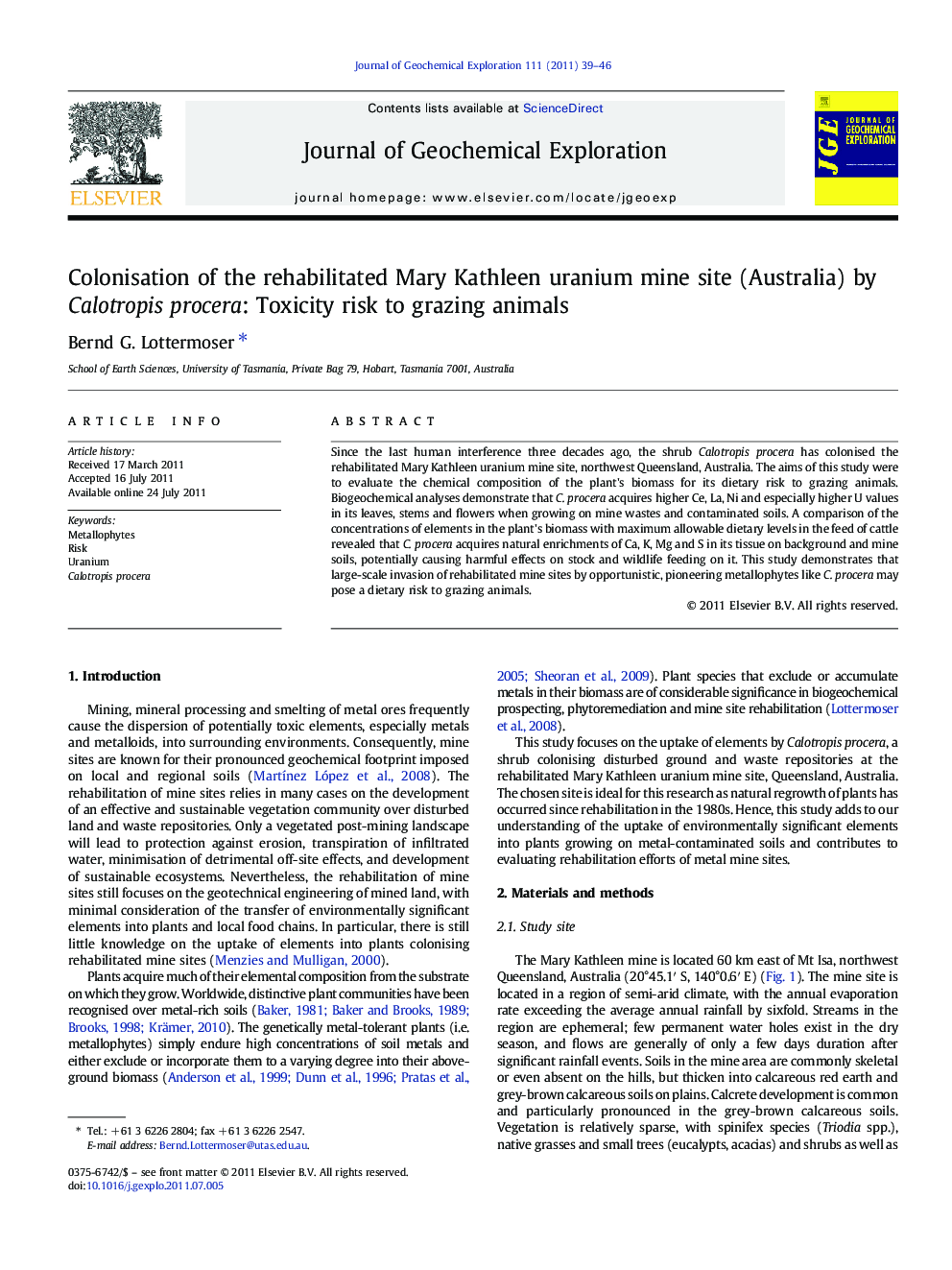| Article ID | Journal | Published Year | Pages | File Type |
|---|---|---|---|---|
| 4457821 | Journal of Geochemical Exploration | 2011 | 8 Pages |
Since the last human interference three decades ago, the shrub Calotropis procera has colonised the rehabilitated Mary Kathleen uranium mine site, northwest Queensland, Australia. The aims of this study were to evaluate the chemical composition of the plant's biomass for its dietary risk to grazing animals. Biogeochemical analyses demonstrate that C. procera acquires higher Ce, La, Ni and especially higher U values in its leaves, stems and flowers when growing on mine wastes and contaminated soils. A comparison of the concentrations of elements in the plant's biomass with maximum allowable dietary levels in the feed of cattle revealed that C. procera acquires natural enrichments of Ca, K, Mg and S in its tissue on background and mine soils, potentially causing harmful effects on stock and wildlife feeding on it. This study demonstrates that large-scale invasion of rehabilitated mine sites by opportunistic, pioneering metallophytes like C. procera may pose a dietary risk to grazing animals.
► Calotropis procera is a metallophyte shrub. ► Calotropis procera accumulates large quantities of Ca, K, Mg and S in its tissue. ► Invasive metallophytes represent a chemical toxicity risk to grazing animals.
